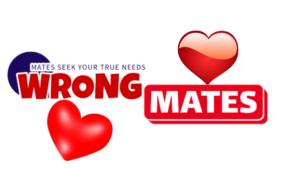:max_bytes(150000):strip_icc():format(jpeg)/VWM-bright-b-e23a4e9f3a9442079075746b43fdaabd.jpg)
I must admit I never gave much thought to the odd bits of everyday “junk” like receipts, coupons, flyers, stamps, or product tags before tossing them in the trash. That is until I stumbled upon the latest self-care trend sweeping social media: junk journaling.
Junk journaling might sound like an oxymoron, but that’s what sets it apart. Instead of being a place to organize your thoughts or to-do list, it’s a place to organize all your (you guessed it) junk.
Think of it as the less structured, more laidback cousin of traditional journaling and scrapbooking. Part of the fun is that there are no rules. And in a world that constantly demands productivity, perfection, and constant engagement, this freeform practice might just be the respite our mental health needs.
Given the promising stress-busting benefits and practically no barrier to entry, the self-care nerd in me naturally had to try it out.
Ahead, find out how the process went for me and whether or not the hype rang true.
My Weekly Junk Journaling Experience
To stay as close to the theme as possible, I decided to create my own notebook for this experiment by repurposing discarded scraps. You can see a couple pages from my journal at the top of this article. I used an old wedding card to make the notebook cover and cut and stapled old newspaper sheets, paper bags, and leftover wrapping paper to make the pages. Pretty cool, right?
Here’s how it went from there:
Week 1
Getting started felt the hardest despite my excitement about trying something new. I laid out all the stuff needed, but the moment I sat down, I felt stuck. I watched several junk journal flip-throughs on YouTube for inspo, but it only made me feel more anxious to start.
That is until I reminded myself there are no rules. So there’s no pressure to get it right. I put all the expert tips aside and just got to it. I picked up the scraps and got gluing without worrying if the final result would look pretty enough. It didn’t. But did I enjoy the process? Oh yes. It took me a while to get unstuck from thoughts of getting it right. Once I did, I was able to let loose and have fun—which was the whole point.
Week 2
Now that I didn’t set any expectations for the weekly spread, the ideas came more naturally. I didn’t have to force myself to get started. In fact, I was totally engrossed for over three hours, a rare feat given how my attention span, like many, has shrunk considerably, thanks in part to our increasingly digital-heavy lifestyle.
Week 3
I didn’t have as much paper junk for the week as I would have liked, so creating a spread turned out to be a fun creative challenge. I turned to more unusual scraps like withered leaves from the backyard, dried floral tea leftovers, and a bunch of colorful buttons and ended up with a cutesy nature-themed collage.
Week 4
I came down with a cold but throughout the week I was looking forward to sitting down with my journal as soon as I got better. By this time, I also noticed I felt more present when doing even ordinary things like eating a snack, sorting trash, or putting away groceries.
The past four weeks felt like a mini treasure hunt. No matter what I was doing, part of my mind was always looking for the next “surprise” find to add to my journal. It actually brought a spark of joy to even the most routine tasks. I also noticed creating spreads kept me so engaged that I spent way less time doomscrolling.
The lack of rigid rules made the whole process more freeing, especially for a recovering perfectionist, like me since there’s no “wrong” way to junk journal, which quells any fear of making mistakes. And the best part? The sense of accomplishment that came from holding something tangible I created from scratch. It was a nice mood booster.
Why Junk Journaling Works
After noticing all the positive effects, I wondered—is there actual science behind this? To find out, I tapped experts to get the scoop on how creative outlets like junk journaling can improve our mental well-being. Here’s what they shared:
It May Lower Stress And Anxiety
There is something incredibly freeing about not worrying if your handwriting is neat or your thoughts make sense. “Instead of writing in structured sentences, you can use colors, textures, and images to express your feelings. This creative self-expression has been shown to help reduce stress, ease anxiety, and improve overall mood,” says Lisa Anderson, LCSW, clinical director at Brooks Healing Center, Tennessee.
It Promotes Mindfulness
The tactile, creative process of picking, cutting, and pasting different materials encourages mindfulness, grounding you in the present moment, says Allison Barton, a San Diego-based therapist specializing in trauma, anxiety, and perfectionism. This helps pull your mind away from intrusive thoughts and feelings, making you feel calmer and more in tune with yourself, adds Anderson.
It Helps Cultivate Gratitude And Joy
Junk journaling invites you to find meaning in seemingly insignificant items. Maybe it’s a coffee shop receipt from a perfect morning, a pressed flower from a walk, or a silly doodle that made you smile. “When collected and arranged in a journal, these small details become a visual reminder of the good moments we often forget. It shifts your perspective from focusing on stress to appreciating your day’s tiny sparks of happiness,” Anderson explains.
Over time, this skill can translate to viewing everyday life with renewed appreciation and build a more positive emotional outlook, says Barton.
Should You Try Junk Journaling?
Since junk journaling focuses on creative self-expression rather than skill, it’s suitable for people of all ages and artistic abilities, says Barton. “It’s particularly helpful for those who struggle with perfectionism as it promotes free and non-judgmental creative exploration,” she adds.
It’s also beneficial for anyone dealing with grief or trauma as it provides a safe space to explore and process difficult emotions that may be hard to put into words, says Janet Bayramyan, LCSW.
According to Anderson, junk journaling is also great for neurodivergent individuals, like those with ADHD or autism, as it offers an open-ended, hands-on way to process thoughts and emotions without rigid rules.
Alternatives to Junk Journaling
If junk journaling is not quite your thing, no worries! Several alternative activities offer comparable mental health benefits. For example:
- Coloring
- Bullet Journaling
- Collage Making
- Clay Modeling
- Diamond Art
- Gardening
- Knitting
- Crocheting
- Zentangling
The key is to choose a creative outlet that feels natural and enjoyable to you—one that gives your brain a break while also helping you express yourself, says Anderson.
Takeaway
Will I keep junk journaling after this month-long experiment? Absolutely. It may have started as a curious dip into a TikTok trend, but I can see junk journaling as a fun addition to my self-care toolkit—one that has helped me slow down, be more present, and more grateful for life’s little moments.
Am I suggesting everyone should start junk journaling, though? Not necessarily. Self-care is like Cinderella’s shoe, one size doesn’t fit all. Like the experts said, choose what resonates with you the most.

